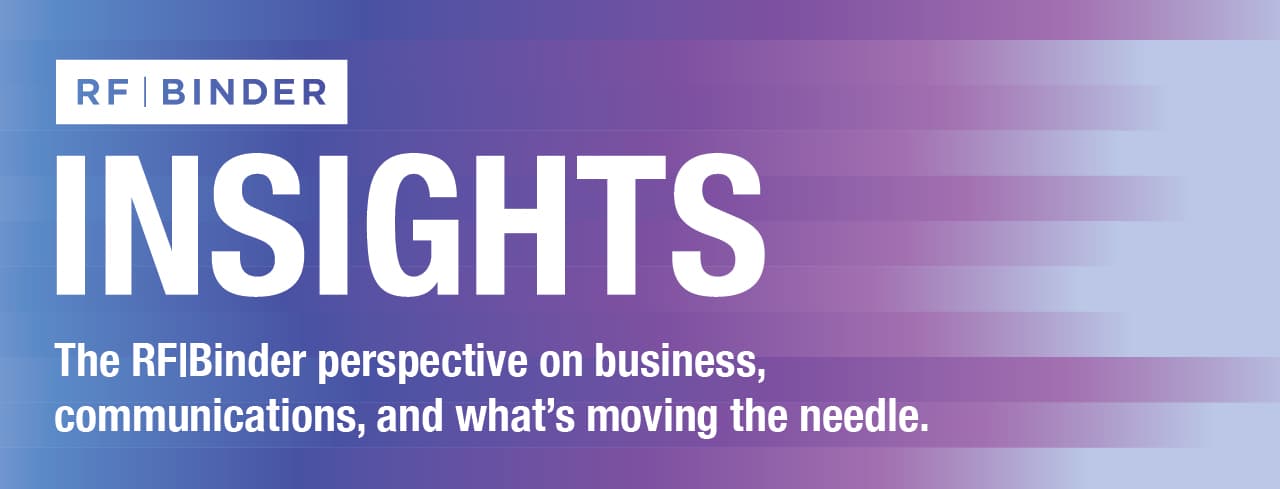At RF|Binder’s recent Hour to Empower, we had the opportunity to learn from Adriane Berman, Senior Director of Media Analytics, Business Intelligence, and Strategy at the National Football League. Adriane directs the use of data in a variety of areas including television and streaming rights deals, NFL game scheduling, ratings prediction models, and the development of a comprehensive measurement of engagement with the NFL.
RF|Binder hosts Hour to Empower sessions regularly, featuring a diverse array of speakers and thought leaders. These sessions aim to ignite introspection, foster meaningful conversations, and push new perspectives to lead to tangible outcomes for our clients.
In the highly competitive landscape of professional football, staying ahead of the game requires more than just on-field prowess. Behind the scenes of the NFL, data analytics serve as a powerful tool for the organization to gain valuable insights, understand fan behavior, and make informed business decisions. Adriane Berman, a seasoned data analyst working with the NFL, offers a unique perspective on how the league harnesses data to drive success.
The Pulse of the NFL: Understanding Seasonal Dynamics
Adriane provides valuable insights into the seasonal ebb and flow of her role at the NFL, highlighting the distinct differences between the regular season and the off-season. During the regular season, data analytics take center stage as teams and broadcasters closely monitor viewer trends, ratings and engagement metrics in real time. Adriane remarks, “In season, it’s much more reacting to needs or questions. It’s about providing information quickly and effectively to keep up with the dynamic nature of the games.”
One of the NFL’s primary goals is to engage its vast audience effectively. Adriane discusses the league’s efforts to capitalize on consumer trends, from fantasy football to legalized sports betting. She explains how data analysis informs strategic decisions to optimize fan engagement while maintaining the integrity of the game. “Sports betting and fantasy football have reshaped the landscape of fan engagement. We leverage data to understand audience behavior and tailor our offerings to meet their evolving preferences,” says Adriane.
Conversely, the off-season provides an opportunity for reflection, strategic planning, and preparation for the future. This is where the organization leverages data to inform long-term strategies. Adriane states, “This time of year is crucial. We have a yearly budgeting process, and it’s about planning for the next year and our department holistically.”
The Business Side of Data
By leveraging data-driven insights, the NFL can make informed business decisions, including about partner agreements, marketing strategy, and maximizing engagement.
Moreover, Adriane highlights the role of data analytics in enhancing transparency, accountability, and stakeholder engagement. By providing actionable insights to decision-makers, data analysts empower teams and departments to make informed choices that drive business growth and maximize ROI. Through effective budgeting and strategic planning, the NFL can navigate economic uncertainties and position itself for long-term success.
Leveraging AI and Emerging Technologies
As technology continues to reshape the sports industry and beyond, the role of artificial intelligence (AI) and machine learning in NFL data analytics continues to be explored. By harnessing the power of AI-driven algorithms, the league can streamline processes and uncover hidden patterns within vast datasets. Adriane explains, “We do a lot of data modeling, and that data modeling is machine learning-based, which is AI. It’s about leveraging AI to make data work more efficiently for visualization tools and identifying changing trends.”
However, Adriane also underscores the importance of responsible AI governance and ethical considerations. As AI technologies become more pervasive, organizations must prioritize transparency, accountability, and data privacy to maintain trust and credibility. By adopting ethical AI principles and best practices, the NFL can harness the full potential of emerging technologies while mitigating potential risks and challenges.
Responding to Trends and External Factors
In a rapidly evolving media landscape, Adriane discusses the challenges of tracking and responding to emerging trends in consumer behavior. From the rise of streaming platforms, and the growing influence of social media, to the unexpected surge of interest following Taylor Swift and Travis Kelce’s relationship, the NFL must adapt its strategies and react on-the-fly to meet the changing preferences and expectations of fans. Adriane explains, “We use external sources to stay on top of trends. It’s about understanding what’s happening in the viewership space and how things are being used across the industry.”
In the fast-paced world of professional football, success isn’t solely measured by touchdowns and championships. Behind every game and play lies a wealth of data-driven insights and strategic decision-making. By staying ahead of the curve and anticipating shifts in consumer behavior, the NFL can capitalize on new opportunities and maintain its competitive edge. From personalized fan experiences to targeted marketing campaigns, data analytics serve as the backbone for the league’s operations. As the NFL continues to evolve, one thing remains clear: in the game of football and data, adaptation is key to staying ahead.
What Communications Professionals Can Learn from Data and the NFL
While the focus of this Hour to Empower was the role of data in the NFL, there’s a clear connection to the world of communications, marketing, and public relations. In a landscape where media and consumer preferences are constantly evolving, using data to track and inform strategic decisions allows communications professionals to proactively respond to emerging trends. The role of AI and evolving technologies is also top of mind, as many agencies consider its uses in helping with brainstorming, streamlining processes, and increasing organizational efficiencies. In the end, data and AI serve to shape stories and narratives. By aligning marketing efforts with the data, these narratives will connect with both broader business objectives and consumer preferences.

